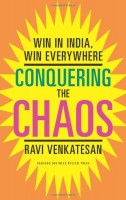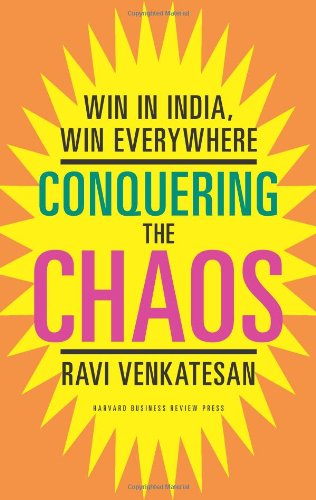 Author: Ravi Venkatesan
Author: Ravi Venkatesan
Publisher: Harvard Business Review Press – 232 pages
Book Review by: Sonu Chandiram
India is a nation of about 1.27 billion people, the second largest in the world, after China. It has 17.3 percent or almost one-sixth of the world’s population. In 2013, it had a gross domestic product of $2.047 trillion, the tenth largest in the world. But on a nominal or purchasing power parity basis (local affordability of goods and services relative to people’s incomes) however, it was ranked the third largest economy in the world, with a GDP equivalent of $5,777 trillion.
India’s economic growth in recent years has been impressive, especially in international trade. It was the sixth largest exporter of services and the nineteenth largest exporter of goods to the world in 2013. India is not only a large collective supplier of manufactured articles but also a decent-sized buyer, with a growing market for the world. Its middle class is rapidly expanding: in 2013 the country bought $617 billion worth of goods and services from around the world.
What is even more exciting than all the above, for the countries and companies around the world that want to do business with India, is the future. Imagine the volume of trade they can do with India where more than 50 percent of its population is below the age of 25, and more than 65 percent or about two of every three people are below 35 years old. All those years until they turn to be 69 (India’s life expectancy rate) the overseas enterprises will be selling goods, and deriving revenues and profits: money coming in for about 35 years to nearly half a century. Just imagine!
All of the above, plus the fact that English is the official language, and most people are technologically proficient, is good news. And Ravi Venkatesan provides even more good stuff in his insightful book. But the bad news is that India, with a stifling government bureaucracy and corruption at all levels and political bickering, has created the fog of uncertainty for most who venture over there. So it is certainly not easy for overseas (and even local) corporations to do business, much less to navigate into a bright, successful future in India.
But don’t worry. An experienced Indian hand at multinational business like Ravi (he was CEO of Microsoft India and Cummins India) can help set up your business in India. He explores the many pitfalls many an overseas firm can and does face, and guides you through the labyrinth, by discussing the various aspects of doing business successfully, as spelled out in this brief overview of the book’s contents that we list with its chapters below:
- India: A Defining Choice
- Escaping the Midway Trap
- The Country Manager in India
- The India Strategy and Operating Model
- Growing Leaders from Lip Service to Results
- India as an Innovation Lab
- How to Think About Joint Ventures in India
- Developing Resilience to Deal with Corruption and Cope with Volatility
- Leading the Paradigm Shift
- Win India to Win Everywhere
Ravi has received much praise for his book from no less than the heads of numerous multinational corporations, including AstraZeneca, BNP Paribas, General Electric, Infosys, L’Oreal, Microsoft, McKinsey & Company, Renault, and Volvo.
Ravi Venkatesan is the former Chairman of Microsoft India and Cummins India. He serves on Harvard Business School’s Global Alumni Board. He is a founder and Chairman of Social Venture Partners India, a network of engaged leaders attempting to address complex social issues through venture philanthropy.
He holds a bachelor’s degree in mechanical engineering from the Indian Institute of Technology, Bombay (1985) a master’s degree in industrial engineering from Purdue University (1986) and an MBA from Harvard Business School (1992),







